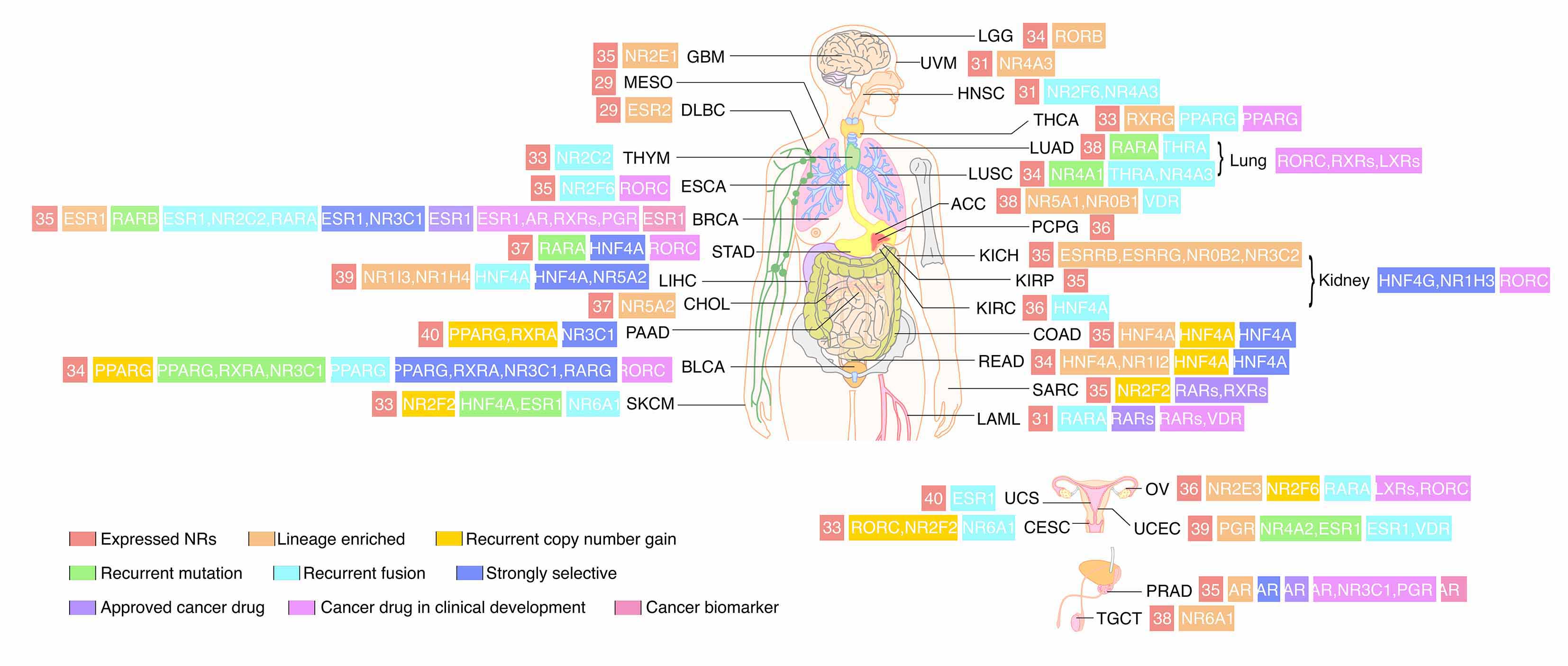To systematically identify potential NR-based biomarker and therapeutic targets in cancer, we integrated the above genomic and genetic profiles across 33 cancer types. Five features (lineage-enriched expression, recurrent focal amplification, recurrent mutation, recurrent transcript fusion, and status as a strongly selective essential gene for cancer cell growth) were chosen to estimate the clinical application potentials for each NRs across cancers. In summary, 37 of 48 NRs showed at least one of the above features in cancer, while 31 of 33 cancer types had NRs with these features (Figure 7A). The potential actionable NRs and their associated features were remarkably varied among different cancer types (Figure 7B. BRCA, BLCA and three others (UCEC, LIHC and SKCM) ranked as the top 5 cancer types when considering the number of both actionable NRs and associated features in each cancer, whereas MESO and PCPG had no candidate NR identified. Many NRs (e.g., HNF4A, ESR1, PPARG, RXRA and AR) exhibited more than one genomic and genetic features, strongly indicating their potential causal-roles during tumorigenesis. Supporting this observation, most of them have been used as therapeutic targets for preclinical and/or early stage clinical development for cancer treatment (Figure 7C). Notably, the same candidate NR(s) tended to be identified in multiple cancer types with lineage or biological similarities; for example, ESR1 and AR were found in women’s cancers (BRCA, OV, UCEC and UCS) and prostate cancer, HNF4A was identified in digestive tract (STAD, COAD and READ) and liver cancer. In addition, the same NR was also found with multiple features in one cancer type: for example, PPARG in BLCA and HNF4A in COAD. Taken together, our findings indicate that many NRs may serve as potential candidates for future development of both diagnosis and treatment in select cancer types.


